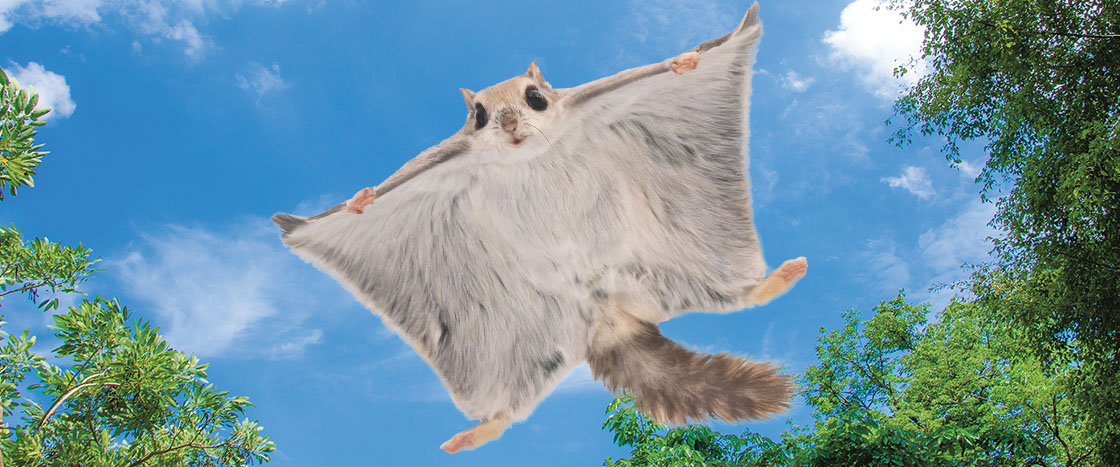Look up! Is that a bat? Is that a bird? No! It is a kind of squirrel called a flying squirrel.

Shutterstock.com (Background); iStockPhoto/Getty Images (Cute Squirrel); KENSHO GOTO (Flying Squirrel)
Squirrel in the Sky
From the September 2025 Issue
Learning Objective: Students will get information about flying squirrels through text and images.
video
(2)
video
(2)
Activities
(3)
Skills Activities
Answer Key
(1)
video
(2)
video
(2)
Activities
(3)
Download All Quizzes and Activities
Skills Activities
Answer Key
(1)
About the Article
English Language Arts Focus
Nonfiction Text Features: Photographs & Labels
Science Focus
Animal characteristics
Step-by-Step Lesson Plan
Implementation
- Whole group
- Small group
Pairings and Text Connections
- From the Storyworks 1 archive: “Picture This! Fish Out of Water” (May/June 2024); “Picture This! Rainbow Squirrel” (September 2022)
- Suggested books: The Secret Life of the Flying Squirrel by Laurence Pringle
Before-Reading Resources
- Vocabulary Slideshow (5 minutes) flying squirrel, glide, label
- Video: Nuts About Squirrels (5 minutes) Build background knowledge on squirrels.
Suggested Reading Focus
Getting information from text and images/labels (20 minutes)
- Have students take a close look at the photo of the flying squirrel. Ask children to share what they notice about it. Explain that we get information from pictures.
- Put your finger on a label, and have children do the same. Tell them that labels point to a part of a picture and tell us more about it. Have children follow the arrows with their fingers. Then read the labels together.
- Read the mini article and bottom bar aloud for information about flying squirrels.
- Finally, discuss what children learned from both the picture and the words in the article. What can they recall? What was most interesting?
After-Reading Skills Practice
Skills: Labeling; capitalization (15 minutes)
Text-to-Speech
